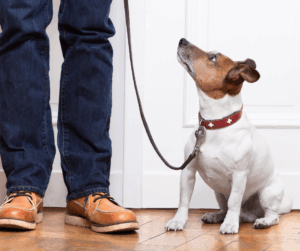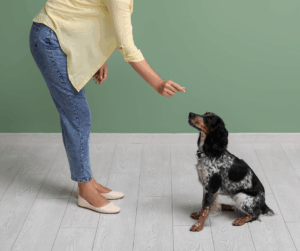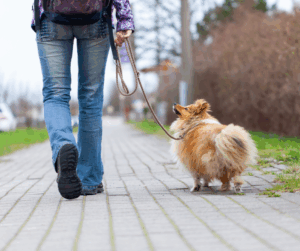 Every January, dog trainers across the country come together to celebrate National Train Your Dog Month, a campaign created by the Association of Professional Dog Trainers (APDT). It started back in 2010 with a simple goal: to remind people that training and socialization are essential to every dog’s well-being.
Every January, dog trainers across the country come together to celebrate National Train Your Dog Month, a campaign created by the Association of Professional Dog Trainers (APDT). It started back in 2010 with a simple goal: to remind people that training and socialization are essential to every dog’s well-being.
The APDT put it beautifully: “Training isn’t just about obedience; it’s about building a relationship.” We are creating connection, communication, and compassion between people and their dogs.
Why January? A Fresh Start for You and Your Dog.
January is a season of new beginnings, fresh goals, and a chance to start again. The APDT chose this month to encourage dog owners to start training early in the year, when routines are still being built and possibilities are wide open.
For many families, training often feels like something they’ll “get to later.” But training is not just a box to check. It’s the foundation of your relationship with your dog. It’s how we help them understand our world, feel safe, and make good choices.
“When we teach with kindness, we create understanding instead of fear.” APDT.
The Mission: Build Trust, Not Tension
The official mission of National Train Your Dog Month is to promote reward-based, positive training methods that strengthen the human–animal bond. The goal isn’t perfection. It’s a partnership. It’s about seeing the world through your dog’s eyes and teaching them how to navigate it with confidence.
My Perspective: Training Is a Lifeline for Fearful and Aggressive Dogs
In my work with fearful and aggressive dogs, training isn’t just about teaching skills. We are building safety. Many of our dogs are scared, and react out of self-protection. Training, when done with compassion, gives them a sense of control in a world that often feels unpredictable.
When a fearful dog learns how to pause and look to their person for guidance instead of panicking, that’s training. When an aggressive dog learns that calm behavior makes scary things go away, that’s training too.
Those moments are quiet victories. They build trust one choice at a time.
That’s why I love the spirit of National Train Your Dog Month. It’s not just tricks or obedience titles. We are helping dogs, especially the challenging ones, find calm, confidence, and connection.
Small Steps, Big Change.
If you’d like to celebrate this month with your own dog, start small. Pick one simple skill or routine that builds trust.
Use reinforcement generously. Speak softly. Notice what your dog gets right. The real magic of training is in those small, shared moments: eye contact, a tail wag, a soft sigh of relief.
If you’re working with fear or aggressive dog behavior, reach out for help. Positive reinforcement–based trainers can guide you safely, without punishment or intimidation. You and your dog deserve a relationship built on safety and respect.
A Month for Connection.
So this January, as trainers across the U.S. celebrate National Train Your Dog Month, let’s all take a moment to remember what training truly is: an act of connection.
Every cue, every treat, every quiet moment says to your dog, “You’re safe. You belong. We’re in this together.”
That’s something worth celebrating — this month, and every month after.
Michael Baugh CDBC teaches dog training in Sedona Arizona and Houston Texas. He specializes in aggressive dog training.


